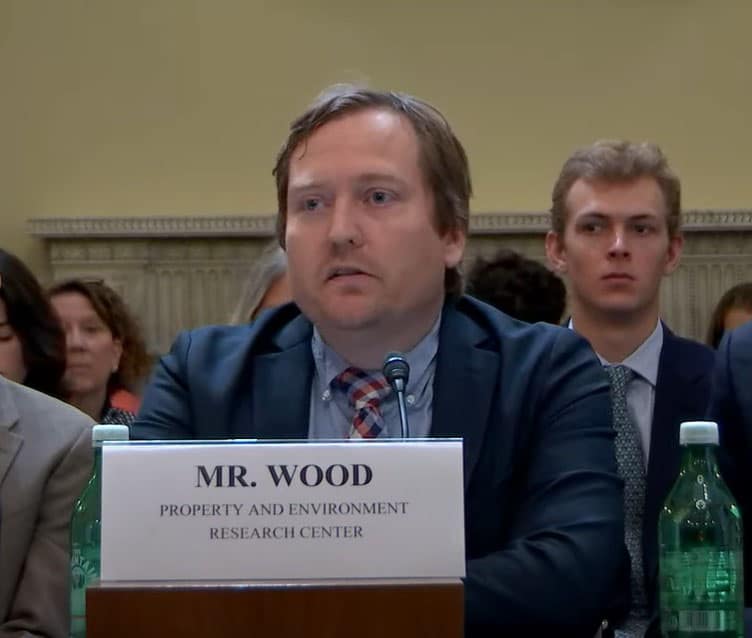This special issue of PERC Reports examines the Endangered Species Act with an eye toward improving the incentives for species recovery. Read the full issue.

Sharing the cost of living with wildlife
Ranchers in Montana’s Paradise Valley provide a valuable public service beyond producing quality beef—their large, private holdings help conserve open space and important elk habitat. But providing these public goods comes with costs to the rancher.
One is the impact of brucellosis, a disease that elk can transmit to cattle. PERC’s Brucellosis Compensation Fund is an innovative financial tool that allows conservationists, sportsmen, or your average wildlife enthusiast to help share the costs of providing elk habitat. The fund covers 50-75 percent of quarantine costs in the event of a brucellosis outbreak, offering security and relief that makes providing habitat a bit easier. Learn more.
Rethinking dirty air
When the Environmental Protection Agency proposed tightening air pollution standards earlier this year, a group of researchers from Stanford raised the alarm. They feared the chilling effect that more stringent standards would have on one of the most effective tools to reduce wildfire pollution: prescribed fires.
As PERC’s Shawn Regan explained in The Wall Street Journal, wildfires are considered “exceptional events” and are typically exempt from regulatory scrutiny, yet prescribed burns generally receive no exemption. “States may face penalties including loss of federal highway money if they exceed pollution standards while mitigating against more harmful smoke from wildfires,” he wrote, underlining why the feds need to rethink regulation of “dirty air from ‘good fires.’”


Boosting Recovery
“Incentives matter, and the ESA too often gets them wrong,” PERC Vice President of Law and Policy Jonathan Wood said during a recent House Natural Resources Committee hearing on the successes and shortcomings of the Endangered Species Act. He highlighted that if we want to see more species recovered and delisted, we must improve the incentives for states, tribes, and landowners to invest in habitat restoration and proactive recovery efforts.
Disappearing deductibles
If you’ve noticed wildfires and hurricanes in the news more lately, you’re not the only one. Insurers are reacting to increasing climate variability by pulling out of states most susceptible to it. Florida and California have been some of the first to see this change due to their overall risk of climate-related events. Inflation has also been a contributing factor by raising construction costs.
Markets are historically first movers when it comes to uncertainty, and these decisions by insurers is yet another example—and perhaps will spur builders to increase resiliency in plans for new homes. Until then, homeowners may have to weather the variability on their own.


Jump for conservation joy
The Preble’s meadow jumping mouse arrived in Colorado during the last Ice Age, but the species’ population has been on the decline over the past century. The rodent is now listed as a threatened species under the Endangered Species Act. Ben Guillon, a former PERC enviropreneur, decided to take private action to help recover the mouse.
Guillon worked with the Colorado State Land Board and Colorado Open Lands to create Table Top Conservation Bank, the state’s first commercial conservation bank that generates credits by restoring and conserving the mouse’s habitat. It then sells those credits to buyers seeking to offset negative impacts to the species’ habitat in other areas. The innovative partnership, supported entirely by private investors and operating on state trust land, won the 2022 Colorado State Land Board Lessee of the Year.
A mammoth meatball
In March, two workers at a Dutch science museum unveiled a melon-sized sphere of meat from underneath a glass dome. The meatball wasn’t just large, it was literally mammoth. Food company Vow, an Australian innovator of lab-grown meat, had produced it using sheep cells and DNA extracted from the extinct wooly mammoth. The meat was not for consumption—the protein used to make it was 4,000 years old. Instead, the ploy brought attention to Vow’s mission to “reinvent food from the ground up to make it more delicious and sustainable for everyone.”




